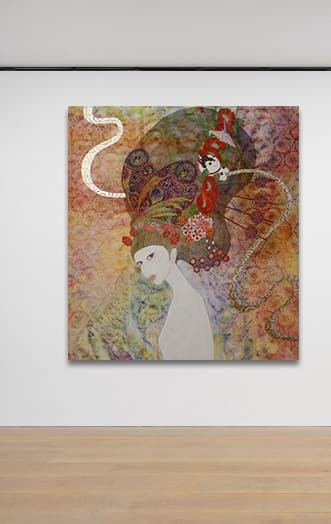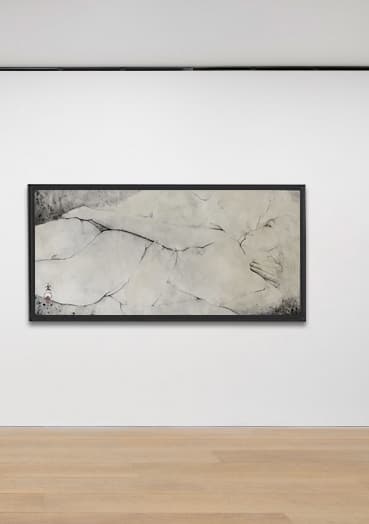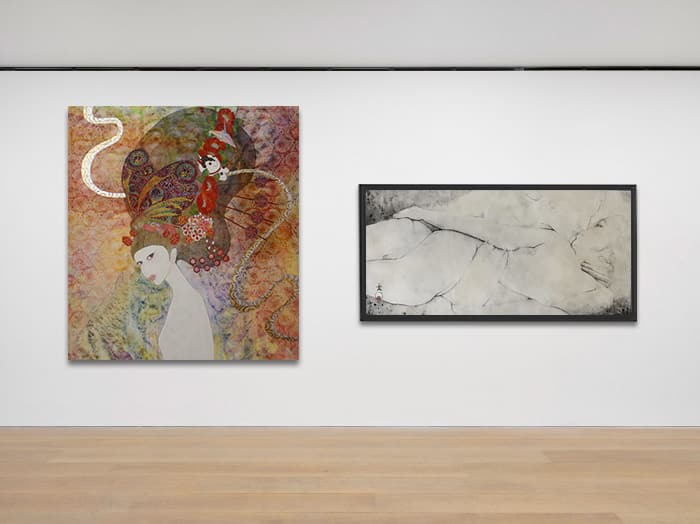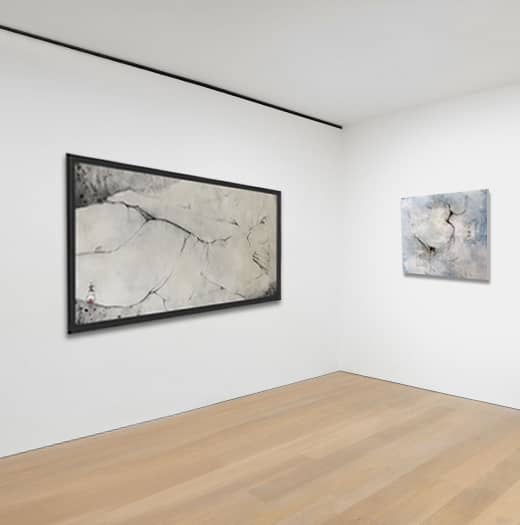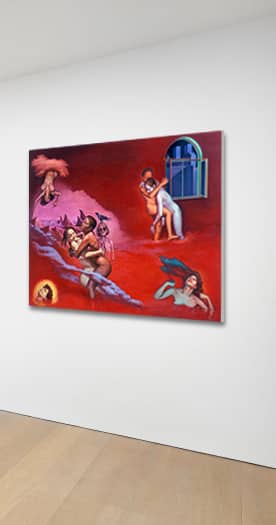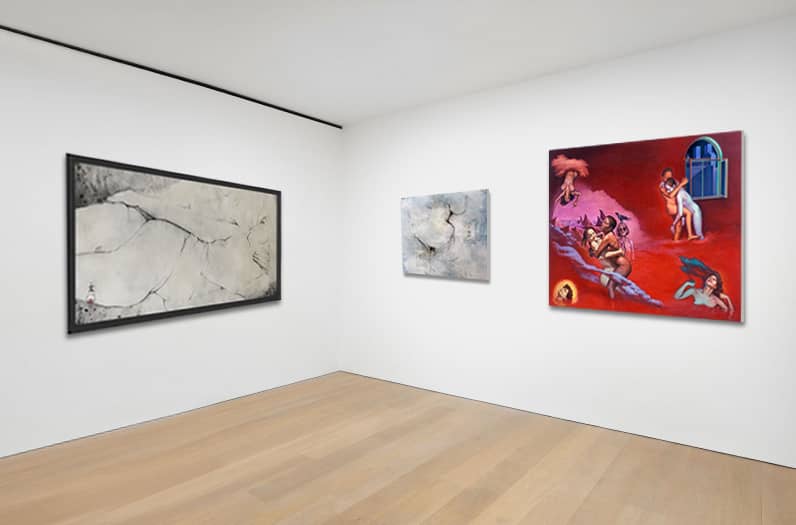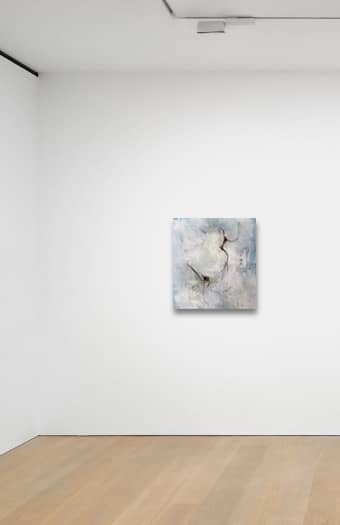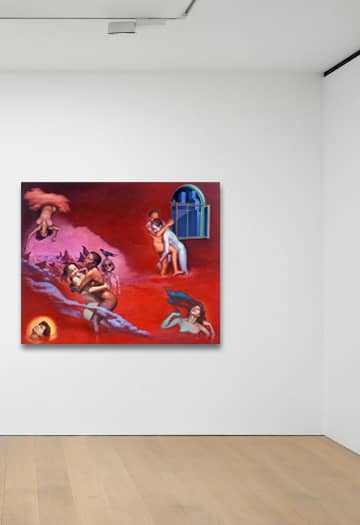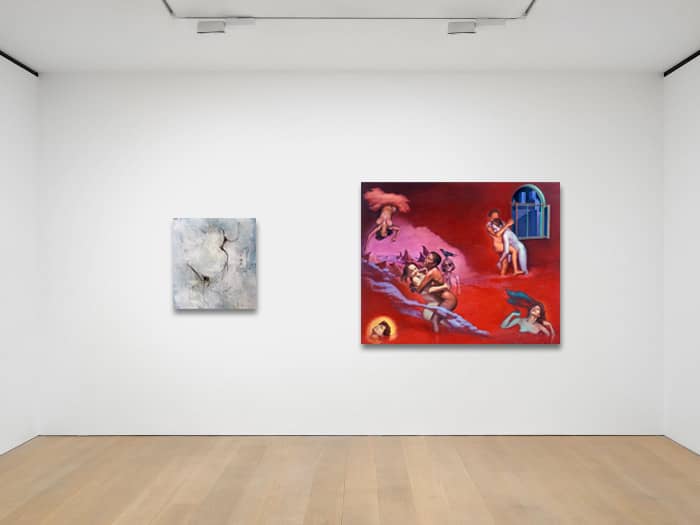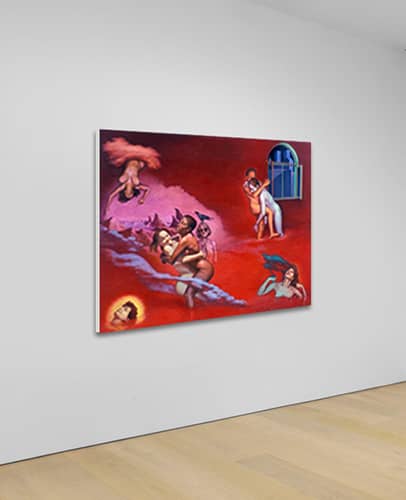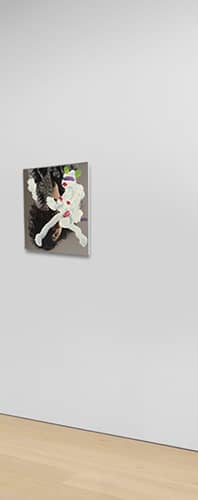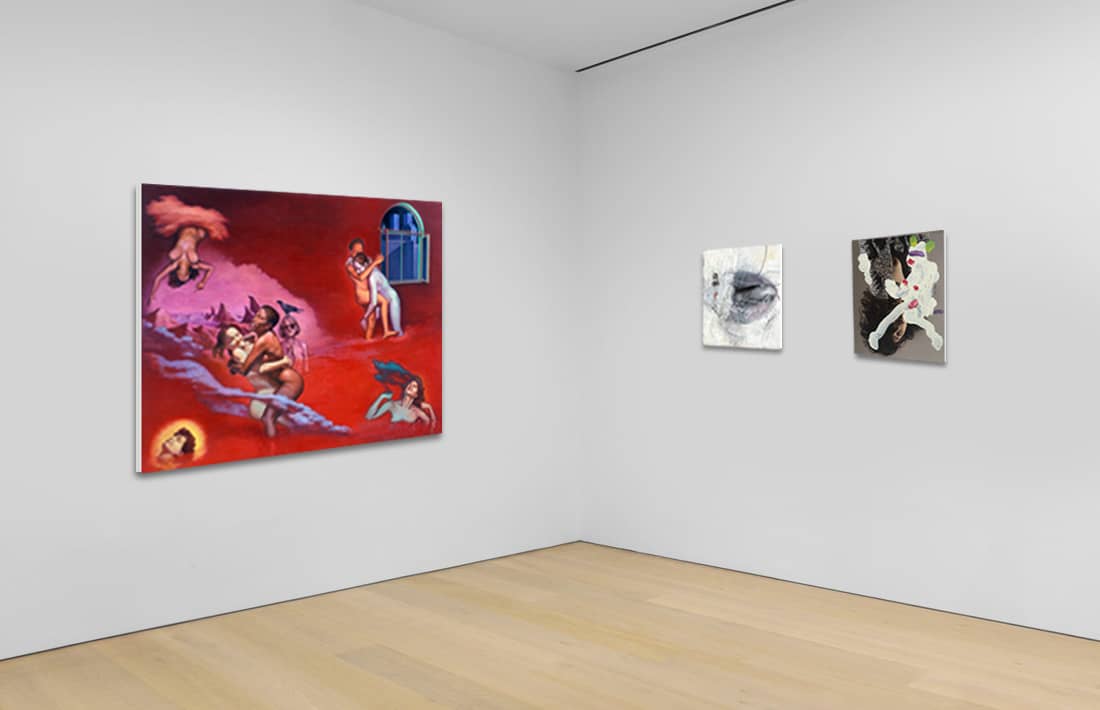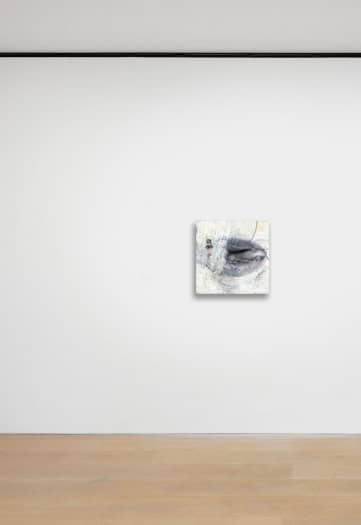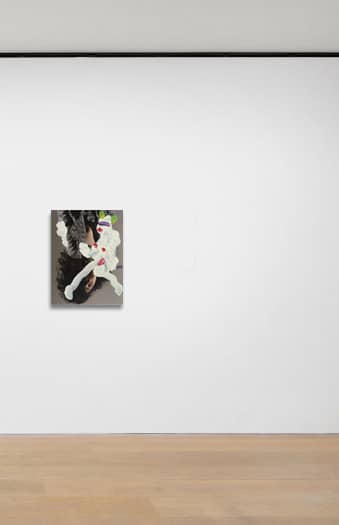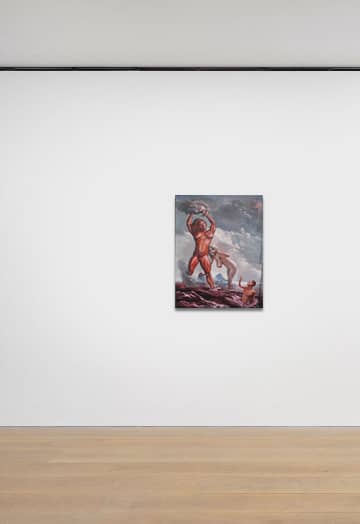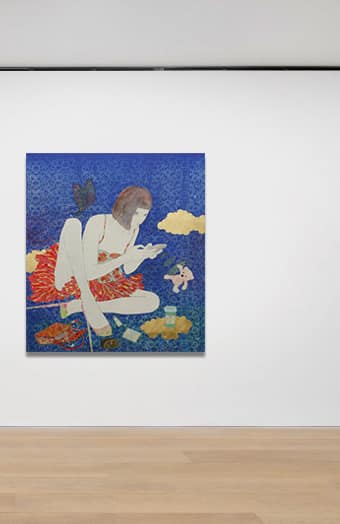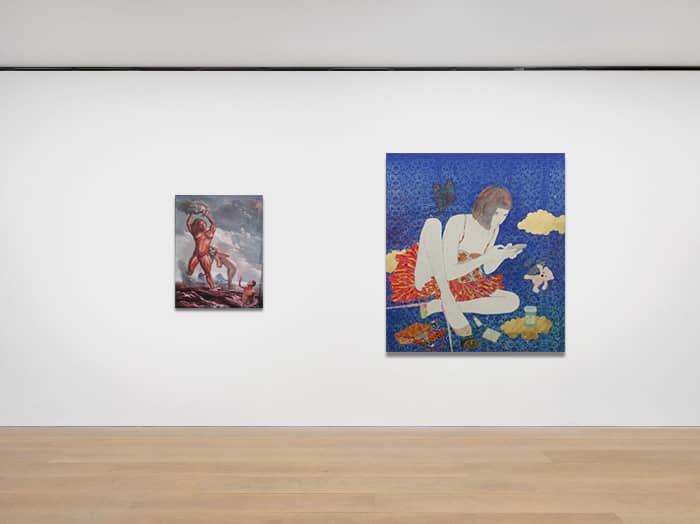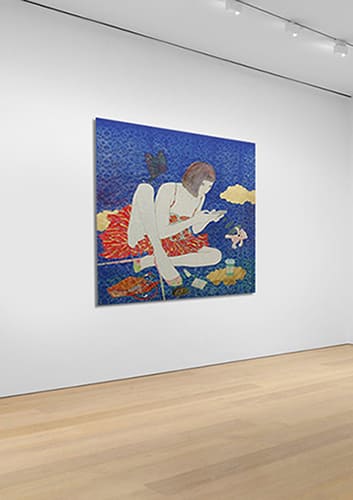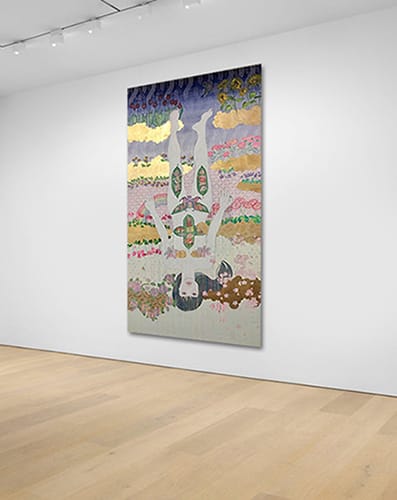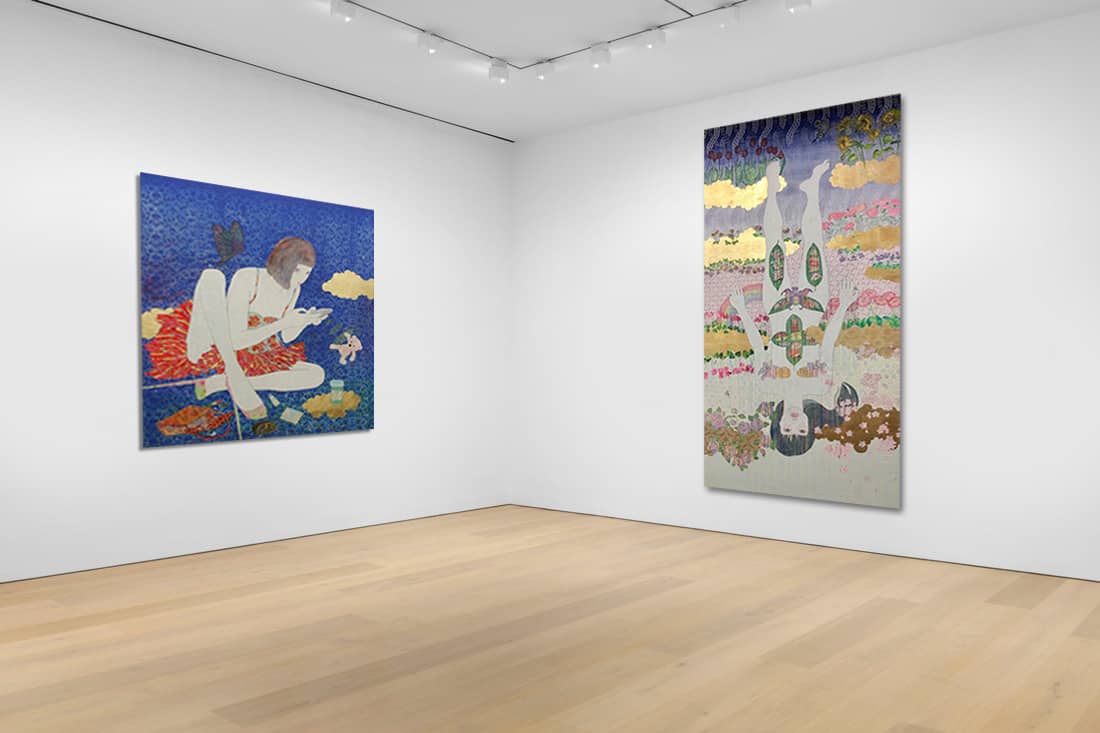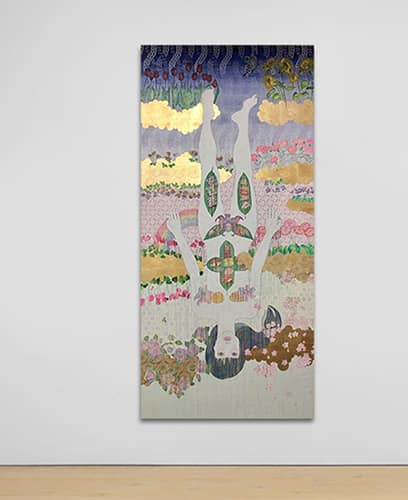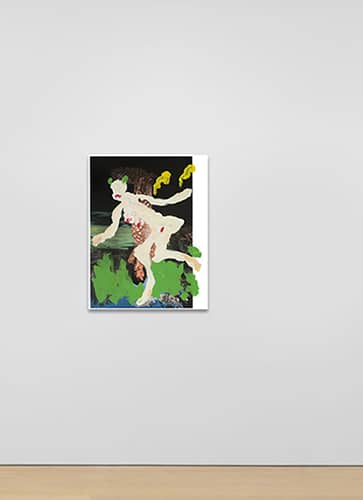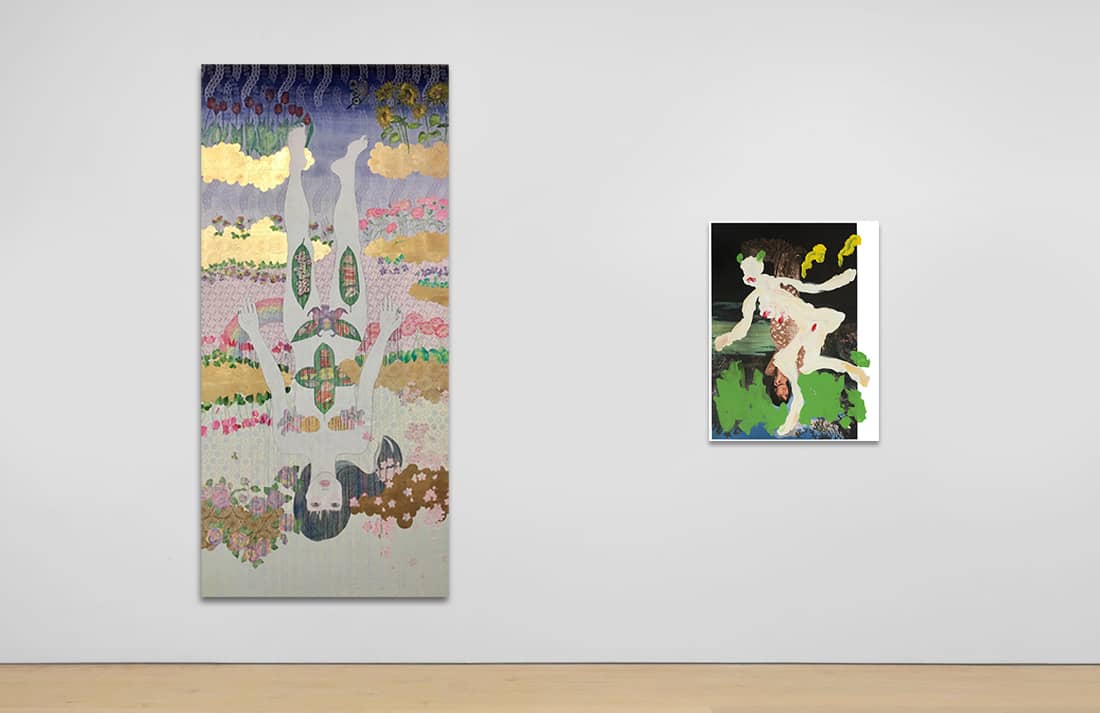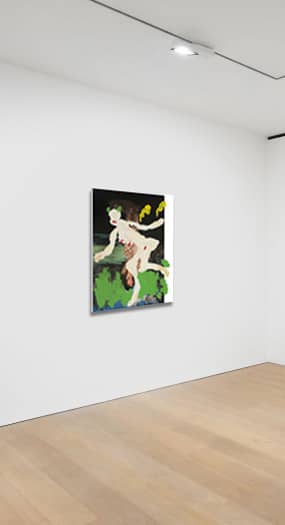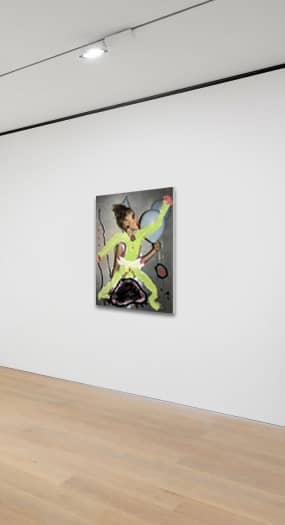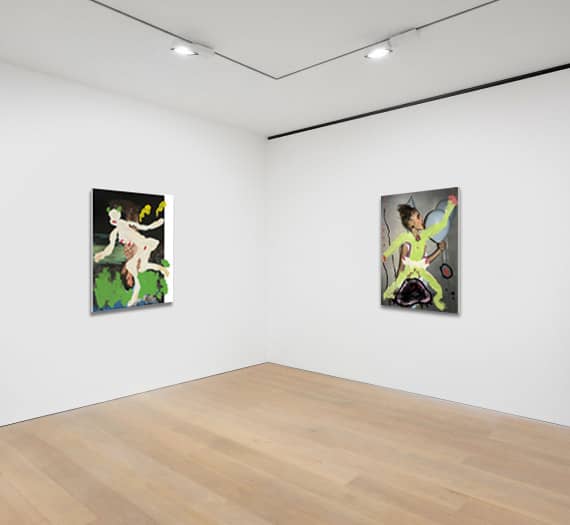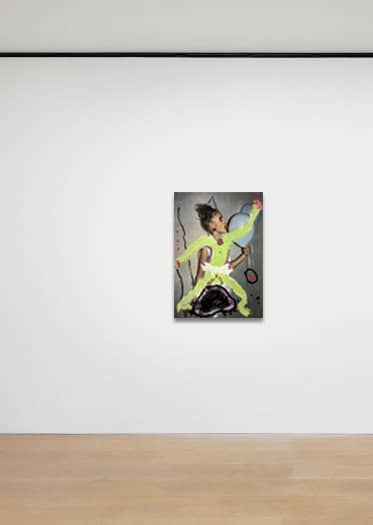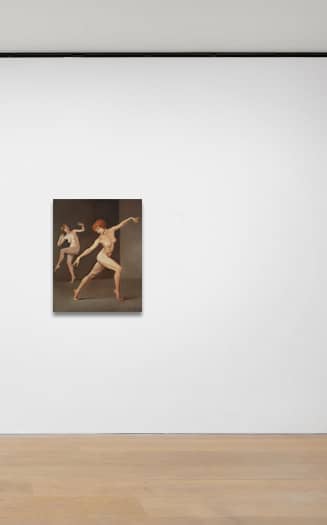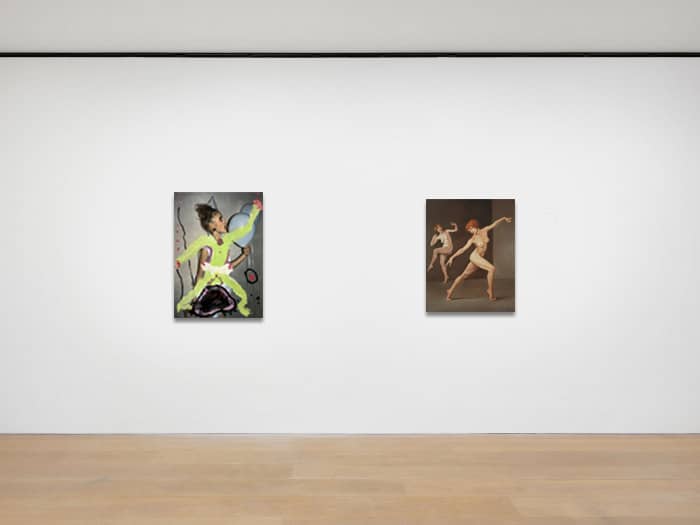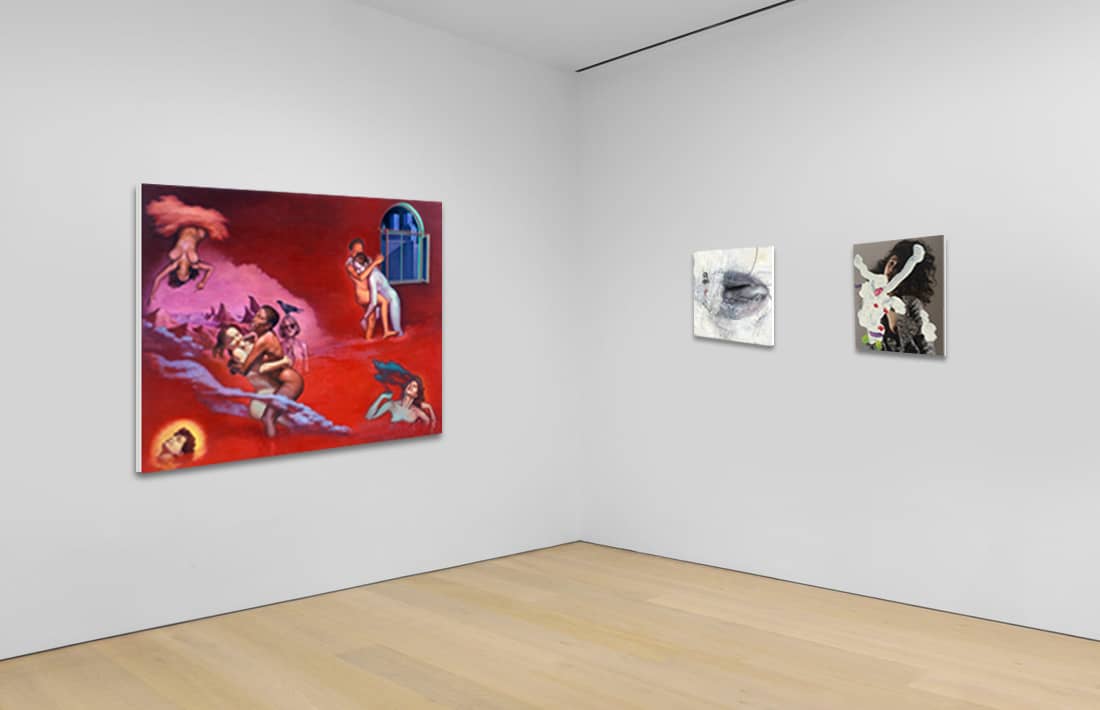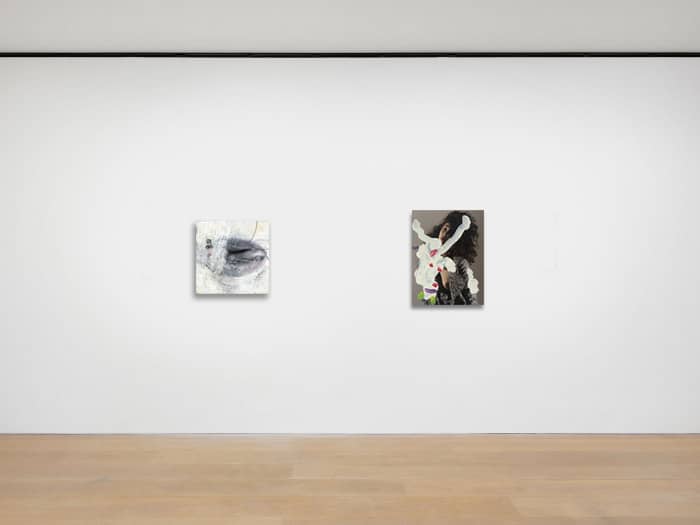Tales of Adjusted Desire
– Curated by Robert Curcio –
April 2nd – May 23rd, 2021
Robert Berry Gallery is pleased to announce its new virtual exhibition Tales of Adjusted Desire curated by Robert Curcio of curcioprojects featuring David Carbone, Bobbie Moline-Kramer, Kaoruko, and Terry Rodgers. The exhibit will open on April 2, 2021 at wwwRobertBerryGallery.com and runs until May 23, 2021.
All the artists in Tales of Adjusted Desire are influenced by the world at large of mediated images mingling with a social media aesthetic creating a subtle anxiety that crosses boundaries. Each of the 12 works whether painting, prints, or mixed media are insights into a self that goes beyond any moral standards or historical margins for an adjusted desire. The “come hither, let’s have it all” promises of images and social worlds we live in and our complex personal interior life together form a disorienting adjusted presence.
That presence in this exhibit is of a nude figure or a fragment of a body, still very desirable forms though somewhat crass or vulgar and with a good dose of kitsch and skewed humor, making us aware of our search for a healthy sensibility beyond a new piece of merchandise or a half-thought swipe. The wanted whole corporal identity regardless of being offline or online, representation or abstraction, fact or alternate fact, are, after all, seamlessly linked, connected and shared as calibrated tales of that adjusted desire.
David Carbone’s painting A Shining Tangle appears to be a depiction of an ancient heroic epic in which mortal men are imperiled by their encounter with two giant female manifestations of the divine. Or another way to look at it is as a postmodern tongue-in-cheek look at male anxiety by way of interpreting the wonderful kitschy 1958 film, Attack of the 50 Foot Woman? The cinema of the silent era influences Follies Dancers: Beatrice and Beth, as we investigate a studio with two jazz-age dancers, the incandescent first generation of women who rejected the roles laid down before them to chart their own paths. In the red-hot kaleidoscopic montage of Orphic-Agon, a scene of several woman which depending upon your orientation can either be the latest Pornhub fantasy or it is a metaphor for women’s struggle with each other. However, Carbone attributes an additional meaning for the painting, “This painting was on my easel when I returned home after the morning of September 11, 2001. The view out my studio window included a horrific pillar of smoke, in place of the towers. In the painting, the figure falling from the sky had a new and indelible meaning; the painting had changed.” Life imitating art and the media, or is it art and the media imitating life?
Bobbie Moline-Kramer’s American Shunga series of monoprints are images with a trace of the body highlighted by hand coloring and embellishments, they reveal in their sensuality, their art history references and “sex sells” pitch. The word Shunga literally translates from Japanese to “a picture of spring” and “spring” is a common euphemism for sex. Shunga prints from the 18th century are a specific genre of woodblock prints that depict the entire gamut of sensual pleasures, a kind of sex manual. A full-on close-up of a mouth with a lascivious tongue, The Kiss, while only 12 x 12 inches packs a punch of oral fixation ranging from Brancusi’s The Kiss to just about every toothpaste or soda ad ever made. The combination of airplanes and sex from the “mile high club” to the word “cockpit” and the tag line “Flying the Friendly Skies” are wonderfully played upon in Landing Strip which is the slang term for the shaved pubis. With its simple embrace, Agape Love, brings us to that highest of a soul connection between a couple. Then again, there is the option to swipe to find something more to your liking.
Kaoruko was a teen pop star fully embodied in the production of a fantasy of desire. Now as a visual artist, Kaoruko turns that desire into itself of traditional and modern identities of Japanese women (and women worldwide). In Teddy Bear and Untitled, Kaoruko silkscreened traditional kimono patterns as the backdrops to her paintings of languid young women with references to pop culture and traditional ukiyo-e prints. The idol of Teddy Bear sits suggestively with the spilled contents of her purse, her teddy bear seems discarded, floating clouds and a butterfly pass serenely by. Interrupted on her phone, she unabashedly looks directly at the voyeur returning their gaze. We almost overlook her stiletto heels so exaggeratedly long like knives. A modern woman knows how to balance the contemporary with the traditional with her accessories in Untitled. Kaoruko’s delicate modern beauty with an enchanting gaze wears her hair in the traditional style when wearing a kimono, her hair adorned with a Kanzashi clip that has more than 100 years of history which is now a butterfly clip like the way a teenage girl wears a bowtie in her hair, the dog “Koma” is a god who protects family and loved ones while the origami crane wishes good health to loved ones. With the contemporary accessories Kaoruko references the long-held beliefs of Animism where all natural things have a soul.
Nyotaimori is a form of entertainment from the Edo period of Japan where at a banquet the food is served on a nude female body. While it has faded greatly from Japan’s culture, the West the titillation factor of this “entertainment” continues with scenes in Rising Sun and Sex and the City, even at a Miami restaurant serving female and male versions starting at $500. Kaoruko “flips the script” with all of it in Offering to the Goddess, she sees the nude female body lying on a flower bed, as all women, as a symbol of loving, caring, and nurturing, as an idol to be worshipped as a Goddess and not as a display stand.
Terry Rodgers selects various lifestyle or high-end magazine pages that catches his eye in some way which he carefully removes from said magazines and then proceeds to paint a figure over that image. A kind of automatic response to the image in paint – while the magazine image is a commodity all sleek, pristine, luxurious, a hint of sensuality and everything to make a sale, it is Rodgers’ interventions by gestural brushstrokes of a painted female-ish figure that is spontaneous, distorted, sexual, funny, kitschy and a bit rude, adjusting the image to an unmentioned desire. Rodgers titles this collection MagWerks, that leads back to his reading of Art Spiegelman’s Maus in that he incorporates mouse-like figures to play with images relating our culture. Untitled #59 the magazine page is upside down while the painted figure seems to be dancing with blobs of green bunny ears, a brash stroke of purple covering the eyes and dabs of brilliant red paint for nipples, lips and genitalia or are they just pasties on some burlesque queen? Further distancing himself from his original source material, in Untitled #01 and Untitled #03 the magazine image is scanned and printed on canvas, still retaining its fine and finished sheen, however it is now commodified as a manipulated printed image on which the artist hand applied pigment.
Robert Curcio, curcioprojects, is a curator, writer, and consultant to galleries, artists and art fairs based in NYC. In the past year, Curcio has curated with Donald Kuspit on Mortality: A Survey of Contemporary Death Art at the Katzen Arts Center of the American University, Washington, DC, and When Night Falls and PRESENCE both at Lichtundfire, New York.

